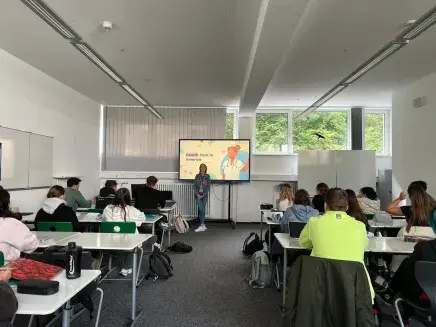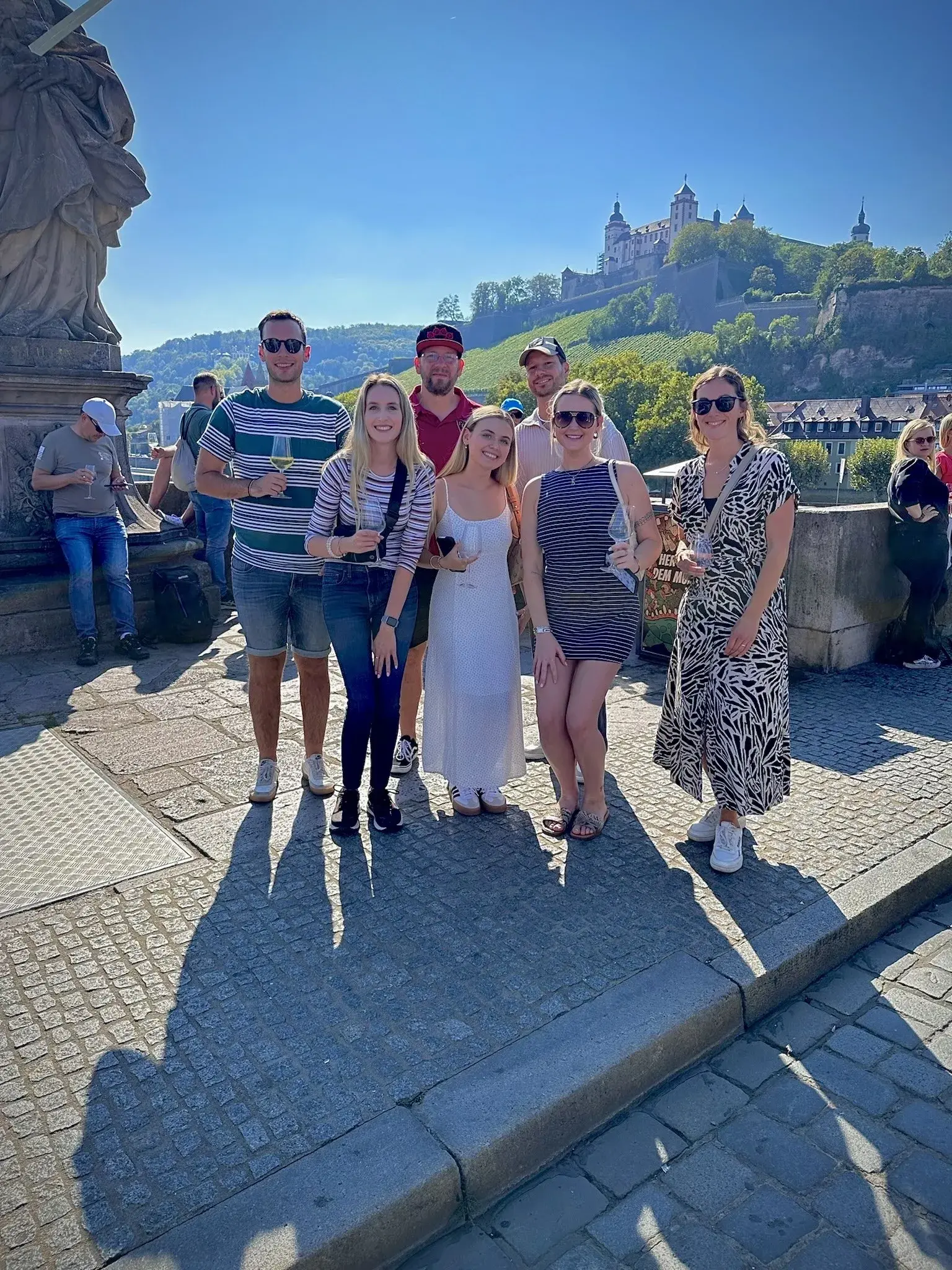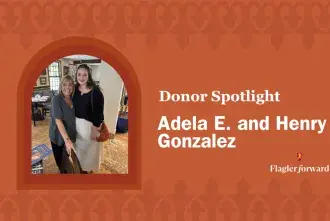
Guided by their academic preparation in the College’s Education Program, senior education majors Bridget Sypniewski, Taylor McCain, and Savannah Call returned with fresh insights and skills. They engaged with German schools to build practical teaching skills, explore different educational approaches, and gain hands-on experience while immersing themselves in a new culture.

Through this blog, they share their candid accounts of the challenges and learning moments they encountered, offering valuable insights into the realities of teaching abroad:
--------
Thanks to the international connections of Flagler’s dedicated Education faculty, we had the incredible opportunity to embark on this experience in Bad Neustadt, Germany. We observed and taught in classrooms at two schools: “Staatliche Fach- und Berufsoberschule Bad Neustadt,” a technical high school, and “Karl Ludwig von Guttenberg Grundschule,” a primary school.

We spent the first two weeks at the technical high school, where students can earn a diploma qualifying them for Universities of Applied Sciences in fields such as technology, business, administration, social work, and health. The last week was spent at the primary school. This structure allowed us to see firsthand the similarities and differences between the German and American schooling systems, assist in classrooms, build relationships with mentor teachers and students, and broaden our teaching horizons.
Bad Neustadt, a charming town in Northern Bavaria, captivated us with its beauty and unique architecture. We were in awe of its character and charm. Additionally, we visited nearby cities like Munich, Rothenburg, and Würzburg, each adding to our appreciation of the region.
Bridget Sypniewski: Teaching at the technical high school
Teaching in a German high school as an American intern was transformative, expanding my view of education. German students, especially those in vocational tracks, exhibit a level of independence I had yet to see in the United States, tackling hands-on projects that build practical skills and responsibility. The language barrier pushed me to adapt my teaching, focusing more on visuals and simplified instructions. I was also surprised by the classroom culture; German students often show high self-motivation and accountability, taking charge of their learning. Observing this firsthand highlighted how independence can enhance student engagement.
These experiences have reshaped my approach to teaching and student interaction. I look forward to bringing what I’ve learned about practical learning and self-driven growth back to my classrooms in the United States.
Taylor McCain: Cultural experiences and personal growth
Since this was my first time traveling outside the U.S., the experience was incredible. While teaching in the high school, several students asked about our “stereotypes” of Germany and if we had encountered any cultural differences. My response was simple: I had none because I had never been to another country. However, we did notice cultural differences, such as the lack of “small talk” and the seeming bluntness in conversations. I was also surprised by how many people in Bad Neustadt were fluent in English, making communication much easier.
I felt very proud of how we extended our educational knowledge beyond American classrooms and adapted to teaching in Germany while learning along the way. It was amazing to look back at the end of our trip and see how we successfully navigated a foreign place, leaving with relationships and memories that will last a lifetime.
Savannah Call: Teaching at the primary school
Walking into the primary school, I was excited to be in my comfort zone and eager to see how it compared to an American elementary school. The first thing I noticed was how welcoming it felt. Students ran around the hallways while teachers smiled through the organized chaos. Their artwork lined the walls along with coat racks for their shoes and jackets. The principal gave us a tour, and we met some of the teachers. Everyone was excited to see us and have us in their classrooms.
One class that stood out was a German Language class for students arriving from other countries. It reminded me of the classes for English Language Learners (ELLs) in America. The four first-grade students knew a little German from their time there. The teacher allowed us to help and participate, which opened my eyes to what being an ELL feels like. You don’t know the language, so you have to use what’s around you to understand what is happening.

This experience was incredible. In just three weeks, we learned so much about ourselves, teaching, and German culture. We are immensely grateful for this opportunity and will carry these lessons and memories with us for the rest of our lives.



